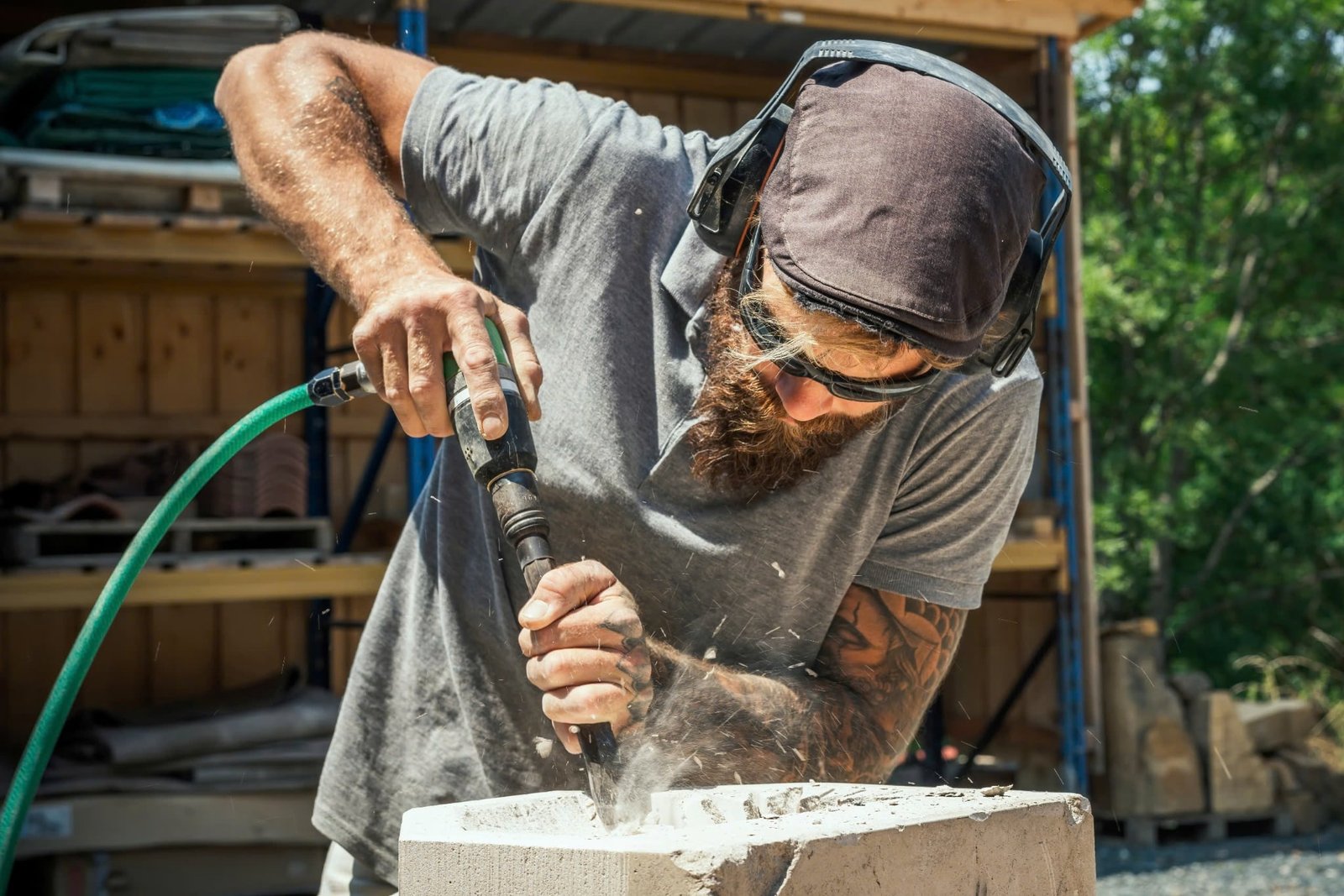
Granite is one of the most admired, widely used natural stones in interior design and construction, especially for granite countertop in kitchens and bathrooms
Granite is one of the most admired and widely used natural stones in interior design and construction, especially for granite countertop in kitchens and bathrooms. Its durability, beauty, and timeless appeal make it a favorite among homeowners, designers, and builders alike.
But what exactly is granite, how does it form, and why is it so valued in both function and design? In this article, we’ll break down the science behind granite, explore its journey from the Earth’s crust to your kitchen countertop, and show how it fits into modern home improvement projects.

Understanding Granite: A Natural Igneous Rock
Granite is a coarse-grained igneous rock, formed from the slow crystallization of magma beneath the Earth’s surface. It’s composed primarily of:
- Quartz (provides hardness and resistance to wear)
- Feldspar (adds color and structure)
- Mica (adds shimmer and tone variation)
These minerals interlock to create the speckled and veined appearance that makes each granite slab unique.
Granite’s strength and composition explain its use in buildings, monuments, and most famously today—granite countertops.
How Is Granite Formed?
1. Deep Underground Magma Cooling
Granite begins forming as magma trapped within the Earth’s crust cools over millions of years. Because this cooling process occurs slowly and deep underground, it allows large mineral crystals to form—giving granite its distinct texture and appearance.
2. Crystallization of Minerals
As the molten rock cools, different minerals crystallize at different times:
- Quartz forms last, filling in the gaps and adding clarity
- Feldspar and mica form earlier, contributing color and shine
3. Uplift and Erosion
Over time, tectonic activity and erosion bring granite formations closer to the Earth’s surface. Quarrying operations then extract large blocks of granite for cutting and polishing.
From Quarry to Kitchen: The Granite Countertop Process
1. Extraction
Granite is extracted in large blocks (weighing several tons) from quarries located around the world—in places like Brazil, India, Italy, and the United States.
2. Cutting Into Slabs
These blocks are sliced into granite slabs, typically 2–3 cm thick, using diamond-wire saws.
3. Polishing and Finishing
Each slab is polished or finished in different textures:
- Polished: Glossy and reflective
- Honed: Smooth but matte
- Leathered: Slight texture for a rustic finish
4. Custom Fabrication and Countertop Installation
Fabricators cut the slab to your kitchen’s dimensions, add edge profiles, and prepare for countertop installation—a process that combines art, engineering, and precision.
Why Granite Is Ideal for Countertops
1. Durability
Granite ranks 6–7 on the Mohs scale of hardness, making it highly resistant to scratches, heat, and impacts. That’s why it’s perfect for high-traffic zones like the kitchen countertop.
2. Visual Variety
No two granite countertop colors are exactly the same. From soft whites and creams to deep blacks, greens, and blues—granite offers unmatched aesthetic diversity.
3. Long-Term Investment
Granite countertops enhance the value of your home, making them an attractive feature for buyers and appraisers alike.
👉 How Does a Granite Countertop Help Increase Real Estate Value?
Common Granite Countertop Colors
Granite comes in a range of colors and patterns depending on its mineral composition and place of origin:
| Color Name | Description |
|---|---|
| White Ice | White with gray veining and flecks |
| Black Galaxy | Deep black with copper or silver specs |
| Santa Cecilia | Creamy yellow with burgundy accents |
| Steel Gray | Uniform dark gray with subtle shimmer |
| Blue Pearl | Gray-blue with metallic highlights |
Choosing the right color helps define the overall granite countertop design theme in your kitchen or bathroom.
Granite Countertop Maintenance: What to Know
Granite is low-maintenance—but not no-maintenance. Without proper care, even the toughest stone can suffer from damage.
Key Maintenance Tips:
- Clean daily with mild soap and water
- Avoid acidic or abrasive cleaners
- Seal annually to maintain resistance to stains and spills
- Wipe spills quickly, especially oils and acids
Avoiding common cleaning errors is key to preserving your granite’s longevity.
👉 What Are the Most Common Mistakes When Cleaning a Granite Countertop?
Granite Countertop Prices: What to Expect
Pricing depends on color rarity, thickness, origin, and finish. Here’s a general range:
| Granite Tier | Installed Price per Sq. Ft. |
|---|---|
| Entry-level | $40–$60 |
| Mid-range | $60–$100 |
| Premium/Exotic | $100–$250+ |
You may also find savings by choosing prefabricated granite or remnant slabs for small projects.
What to Do if Granite Gets Damaged
Though rare, chips or stains can occur. Fortunately, granite countertop repair is straightforward:
- Chips: Filled with resin and polished
- Stains: Removed with a poultice or cleaner
- Etching or dullness: Addressed with re-polishing and resealing
Routine granite countertop cleaning and professional maintenance will prevent most issues.
Final Thoughts: Granite Is a Natural Marvel with Lasting Value
Granite’s origins in the Earth’s crust, its unique mineral composition, and its aesthetic versatility make it a top choice for homeowners and designers worldwide. Whether you want to enhance a modern kitchen, craft a rustic retreat, or increase resale value, a granite countertop offers durability, beauty, and enduring appeal.
By understanding how granite forms and knowing how to care for it, you’re better equipped to make the most of this timeless natural stone in your own home.

